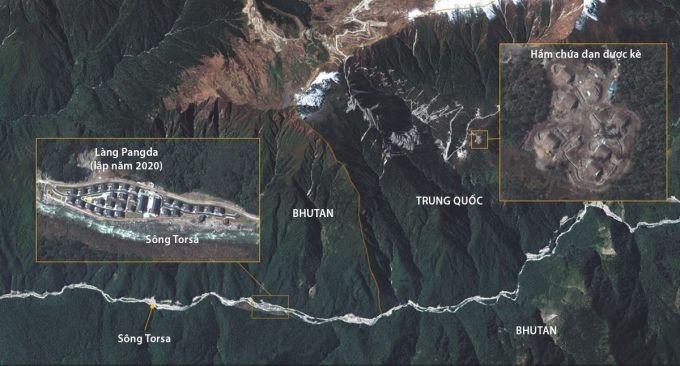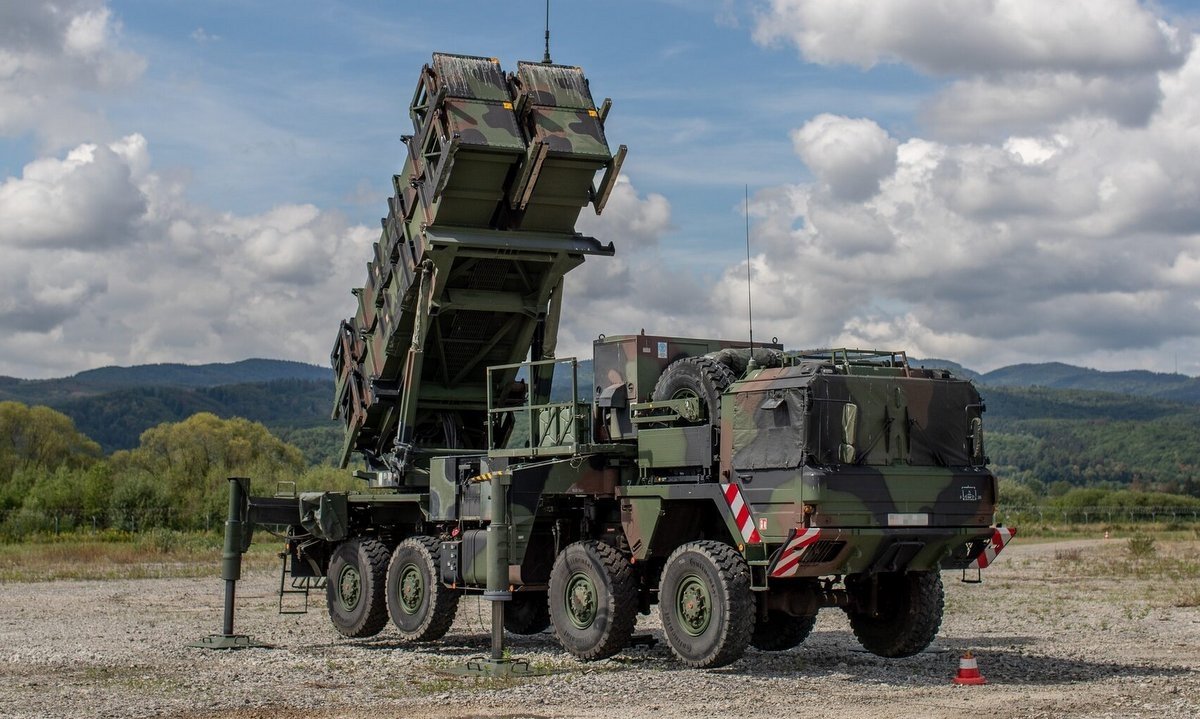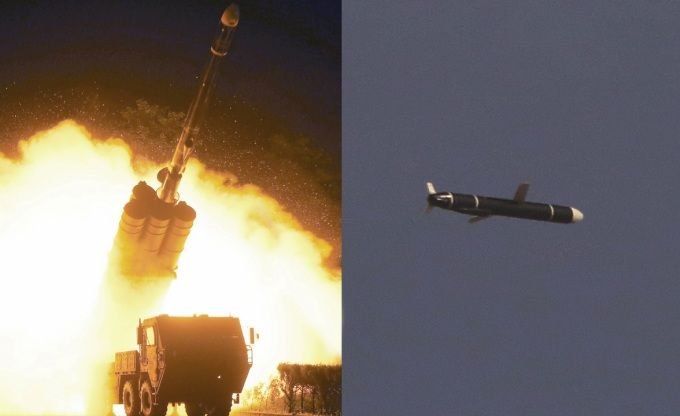
`Motivated by the expansion of sovereignty claims with a low-cost strategy in the East Sea, China has recently increased efforts to apply that model on the border area running through the Himalayas,` Professor Brahma
Chellaney said China is `rushing to build many new villages` in disputed border areas to `expand or consolidate control` over strategic areas that India, Bhutan and Nepal also claim.
`China’s push to build residential areas in desolate, uninhabited border areas has strategic significance with the country’s new military facilities here. These facilities include electrical warfare stations
The location of China’s controversial Pangda village and the area that could be a newly built ammunition depot, October 2020.
India-China border tensions escalated in May 2020, after India announced that Chinese forces quietly occupied mountain peaks and other strategic locations along the border running through the Ladakh region.
A Chinese government document, recently cited by SCMP newspaper in Hong Kong, said that the country intends to build 624 villages in the disputed border area in the Himalayas.
Chellaney commented that the new villages built in the border areas of the Himalayas resemble the artificial islands that China illegally built in the East Sea in its `cabbage strategy`, and warned that the country could `redraw
`Creating a dispute that never existed is the first step for China to assert territorial claims before occupying the area it wants. China often sends militias to pioneer such a strategy,` Chellaney wrote.
The `cabbage strategy` was mentioned by Chinese Army Major General Zhang Zhaozhong in a television interview in 2014. General Zhang said that when there is a sovereignty dispute at sea, China will first send fishing vessels
Similar to how it deploys fishing fleets and coast guard escorts into the East or South China Seas, China sends herding groups into desolate border areas in the Himalayas before the arrival of regular troops.
`China is secretly applying this strategy to gradually occupy disputed territories, creating a fait accompli for India. At that point, India only has two options left, or accept the status quo.
According to Chellaney, this strategy helps China gradually encroach on Himalayan territories, steppe by steppe.
International law stipulates that territorial claims must be based on the continuous and peaceful exercise of sovereignty with the area concerned.
`With the construction of new border villages and resettlement zones there, China can invoke international law to support its sovereignty claims. Effective control is an sine qua non of

The image is said to be of a Chinese village built in a disputed area in the Indian state of Arunachal Pradesh in November 2020.
The border villages are expected to limit the use of force by enemy troops, assist China in gathering intelligence and carrying out cross-border operations.
In November 2020, India released satellite images accusing China of building a village inside the territory of the country’s Arunachal Pradesh state.
China built the `frontier village` program after President Xi Jinping in 2017 called on Tibetan herders to settle in border areas, becoming `defenders of the country’s territory.`
The Permanent Court of Arbitration in 2016 ruled that China’s illegal construction of artificial islands in the East Sea `damages the coral reef environment` here.
Environmental damage is clearly shown on the pristine Doklam plateau, where Bhutan claims sovereignty, but China has occupied it since 2017 and highly militarized this area.

Location of clash between India and China in 2020. Graphic: Telegraph.
General Manoj Naravane, commander of the Indian army, declared that China’s cabbage strategy in the Himalayas `will not work`.
`Although India responded with large-scale military force deployments, the Chinese side still controls most of the areas it occupied nearly a year ago. China’s strategy so far has proven








